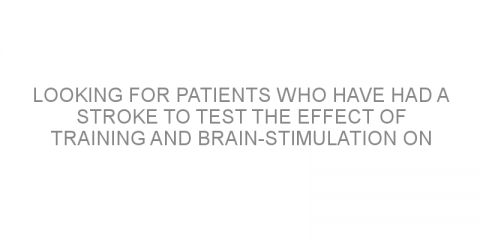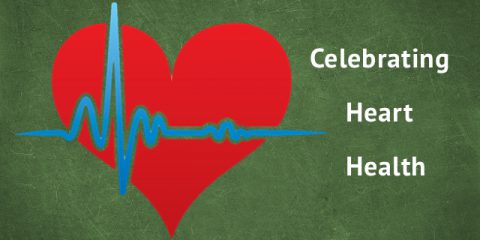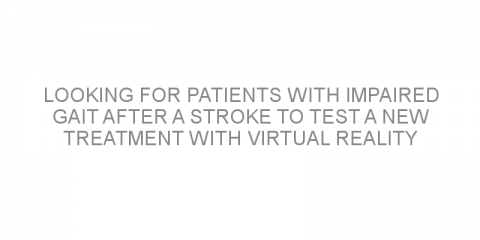In a nutshell This study is examining the effectiveness of brain stimulation on speech impairments after strokes. The main outcome to be measured will be a change in language function and patient communication effectiveness. This study is being conducted in California, the United States. The details Up to 40% of patients have difficulty with...
Read MoreStroke Posts on Medivizor
Can nerve stimulation improve muscle stiffness in patients with stroke?
In a nutshell This study investigated the effect of transcutaneous (through the skin) electrical nerve stimulation (TENS) in muscle stiffness after a stroke. Researchers suggested that TENS reduces leg stiffness in these patients. Some background Muscle stiffness after stroke affects the quality of life of patients and their caregivers. Up to 43% of...
Read MoreLooking for patients who have had a stroke to test the effect of training and brain-stimulation on hand functions
In a nutshell This trial is examining the effectiveness of training and non-invasive brain-stimulation on changing abnormal hand movements after a stroke. The main outcomes to be measured are individual finger function and the ability to use the arms for normal daily activities. This study is being conducted in Maryland, the United States. The...
Read MoreElectrical nerve stimulation in the rehabilitation of arm weakness after stroke
In a nutshell The aim of this study was to investigate the effect of electrical nerve stimulation (ESS) in the recovery of arm function early after stroke. The main finding was that ESS had the same results as arm training alone. Some background Up to a third of patients have arm weakness after stroke. Rehabilitation is a central part of stroke...
Read MoreHappy Heart Health Day!
“The best and most beautiful things in the world cannot be seen or even touched–they must be felt by the heart.” ~Helen Keller “Wherever you go, go with all your heart.” ~Confucius Today celebrates the heart. Today also celebrates heart donors. “In Living On Through Organ Donation,” we shared the story of an amazing...
Read MoreCan a self-ankle mobilization training program improve motor functions in patients with stroke?
In a nutshell This study compared the effectiveness of a 4-week self-ankle mobilization with movement (SAMM) training program with SAMM and an inclined board in patients with stroke. Researchers suggested that SAMM with an inclined board was superior to SAMM alone in the rehabilitation of these patients. Some background The most common complication...
Read MoreIntense exercise may improve quality of life in patients after stroke
In a nutshell This study investigated if an intense aerobic exercise of the legs while doing repetitive tasks with the arms could improve the quality of life of patients after a stroke. The study found that this exercise may improve the quality of life of these patients. Some background The aim of rehabilitation after stroke is to improve...
Read MoreIncobotulinumtoxin A in the treatment of arm spasticity in patients who had a stroke
In a nutshell This study investigated the effectiveness of Incobotulinumtoxin A (Xeomin; IBT A) for the treatment of arm muscle spasms after a stroke. Researchers suggested that injections of IBT A improved arm muscles and movement in these patients. Some background Botulinum neurotoxin (BOTOX) injections are the standard first-line treatment for arm...
Read MoreLooking for patients who had a stroke to test a new device for arm rehabilitation
In a nutshell This phase 3 trial is examining the effectiveness and safety of a virtual reality therapy in the treatment of patients with impaired arm movements after a stroke. The main outcome to be measured is an improvement of arm function and in the quality of life of these patients. This study is taking place in California, US. The details...
Read MoreRobotic hip-assistive device helps patients walk after stroke
In a nutshell This study aimed to see if using a hip-assistive robotic device after stroke can improve patients’ ability to walk and strengthen the legs. The main finding of the study was that gait training with the hip-assistive robotic exoskeleton improved walking speed in patients after a stroke. Some background Improving walking ability is a...
Read MoreLooking for patients with impaired gait after a stroke to test a new treatment with virtual reality
In a nutshell This trial is aiming to treat gait (walking) abnormalities in patients with stroke using virtual reality. The main outcome to be measured will be an improvement in step length and symmetry. This study is taking place in Omaha, Nebraska, the United States. The details Patients with stroke often have complications associated with...
Read MoreLooking for patients with disability after a stroke to test brain injection with stem cells
In a nutshell This phase 2 trial is investigating the effectiveness of brain injections of CTX0E03 stem cells in the treatment of disability after a stroke. The main outcome to be measured is the response of the disabled part of the body to the treatment. The details Patients with stroke, often experience disability such as one side paralysis. The...
Read More












